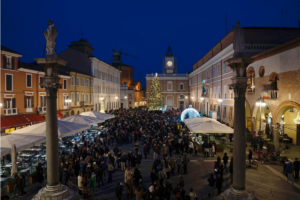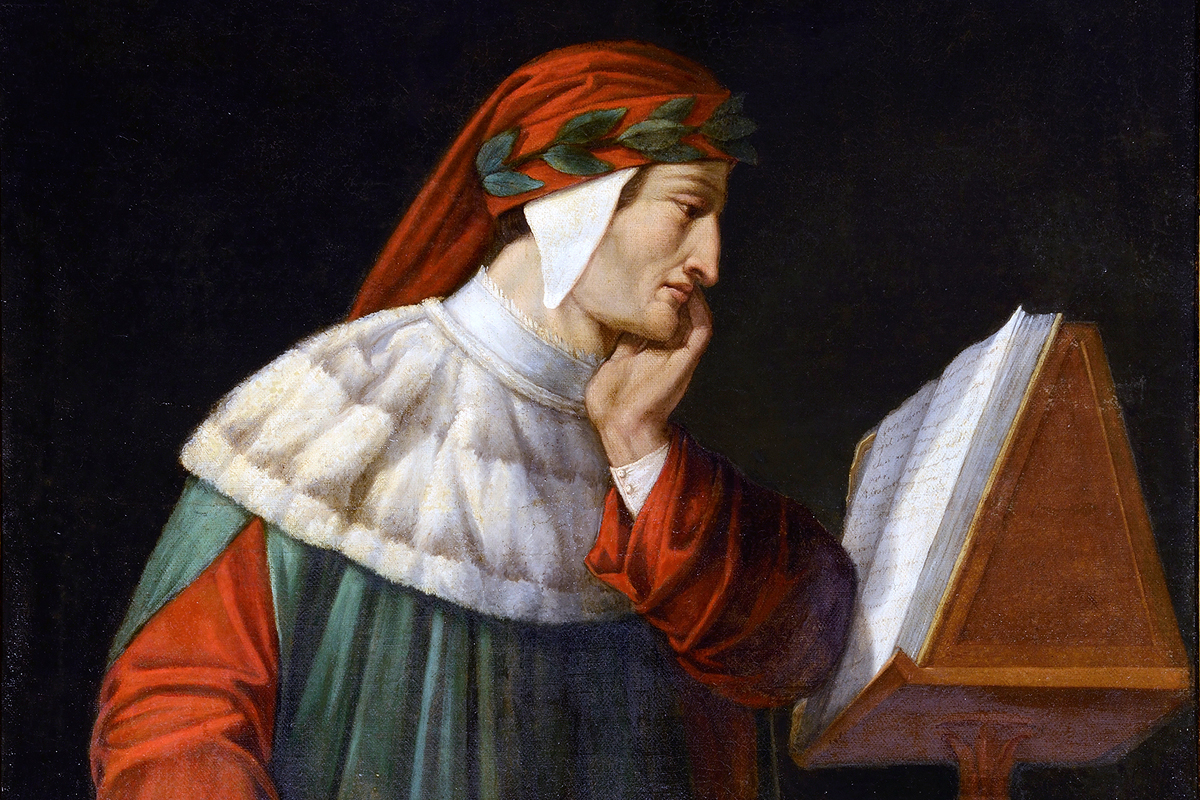DANTE ALIGHIERI (Florence, 1265 – Ravenna, 1231) tells us of Paradise at the time when he admired the extraordinary heritage of Ravenna’s 5th and 6th-century monuments, which were even more numerous at that time, with mosaics covering floors and walls of the basilicas.
Ravenna, his city of refuge during his exile from 1218 to 1231, was the unparalleled artistic, historical and literary atelier in which the verses of Paradiso were born. But it also inspired many other splendid images of the Comedy (a good part of Purgatorio and some cantos of Inferno), thanks to a re-elaboration of the glorious beauty that stood before the poet’s eyes as he was a guest of Guido Novello Da Polenta, Lord of Ravenna.
[Justinian refers to the flight of the eagle whose swift departure from Ravenna gave rise to the imperial era.]
And what it did, once it had left Ravenna
and leaped the Rubicon, was such a flight
as neither tongue nor writing can describe.
(Paradiso, Canto VI, vv. 61 – 63)
Although he does not mention them directly in his Comedy, Dante must have been dazzled by the light of the mosaics in the Byzantine basilicas. Scholars have found various analogies in the cantos of Purgatorio and Paradiso which recall such splendour.
In Canto VI, for example, it is almost possible to see the mosaics of the Basilica of San Vitale, with the imperial procession of Justinian, the Byzantine emperor of the 6th century, to whom Dante offered a eulogy to the perfect monarch. Justinian is the personification of the flight of the eagle, whose swift departure from Ravenna launched the imperial era.
According to scholars, even the “luminous spirals” that form two equal arms of a cross, at the centre of which Christ stands out in relief, recall the mosaic in the apsidal basin of Sant’Apollinare in Classe.
(…) for splendors, in two rays, appeared to me,
so radiant and fiery that I said:
“O Helios, you who adorn them thus!”As, graced with lesser and with larger lights
between the poles of the world, the Galaxy
gleams so that even sages are perplexed;
(Paradiso, Canto XIV, vv. 94 – 99)
For certain, the whole stay in Ravenna inspired the Poet. Several verses of the Divine Comedy make reference to the city, its geopolitical position, to the distinguished members of the nobility and their families (e.g. the Da Polenta family and the Traversari family) and much of the surrounding area.
Famous, in this regard, is the description Dante gives us of “that divine forest, dense, alive with green” of earthly paradise, in canto XXVIII of Purgatorio which the Poet relates to “the pinewood on the lido of Chiassi” (presumably the Pine forest of Classe, located a few kilometres away from Ravenna):
“A gentle breeze, which did not seem to vary
within itself, was striking at my brow
but with no greater force than a kind wind’s,
a wind that made the trembling boughs—they all
bent eagerly—incline in the direction
of morning shadows from the holy mountain;
but they were not deflected with such force
as to disturb the little birds upon
the branches in the practice of their arts;
for to the leaves, with song, birds welcomed those
first hours of the morning joyously,
and leaves supplied the burden to their rhymes—
just like the wind that sounds from branch to branch
along the shore of Classe, through the pines
when Aeolus has set Sirocco loose.”.
(Purgatorio, Canto XXVIII, vv. 7 – 21)







